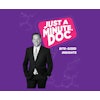
As a provider of crucial healthcare services, your time is worth a lot of money. So it might surprise you when I say that you should spend four minutes learning about each new patient before you ever ask them the question: "What can I do for you today?"
 Jay Geier is the president and founder of the Scheduling Institute.
Jay Geier is the president and founder of the Scheduling Institute.Let me explain. Way too many dentists and hygienists start talking about why the patient has scheduled an appointment within the first 15 seconds. They dive in immediately, trying to get to the root of the pain or discomfort and solve the problem. However, when they do that they aren't learning valuable information about a patient -- which could have been used to get a "yes" to treatment plans presented later on.
Here's how it works. Take the first few minutes to just talk with new patients. You could say something open-ended, such as "Tell me about yourself," but I recommend using the intake paperwork to get what you want out of the conversation. And as you're learning about them, you should be taking notes so that you can do something productive with that information!
For example: "I see you live in XYZ. That's a great neighborhood! How long have you been there? Wow, 15 years." Write that information down.
Second question: "So tell me a little bit about your family." He has a wife and three kids. Definitely write that down but also make a mental note. This patient has lived in this town for 15 years and has a wife and three kids you've never met. That means four more potential patients!
“What you learn during this short span of time will allow you to make appropriate treatment recommendations and maximize the interaction.”
What next? Well, how about something simple: "Tell me what you like to do." You learn he likes to golf and go fishing. Write that down. It could be useful information for gifting in the future or simply for building a strong relationship -- the kind that generates referrals!
Next you could ask, "What do you do for a living?" You might learn that this patient runs a local company, a corporation that has hundreds of employees and customers. Don't you think this could be incredibly valuable information? Assessing sphere of influence is undoubtedly the No. 1 missed opportunity during case presentation for 99% of dentists.
Since we used our detective work to discover this patient's large sphere of influence, we now know two vital pieces of information:
- He has significant referring power at his corporation.
- He probably cares about his image and appearance.
Which means we should ask him if he is interested in fixing that gap between his teeth. Remember, this is the kind of information you would have missed out on if you had jumped right in to diagnosing the patient's problem.
The four-minute rule will also help identify red flags for you. For instance, you might learn that you are this patient's third dentist in one year. That information will tell you that he's not a very compliant patient. The sooner you know that, the better.
The fact is, all patients have different needs and desires. Just by showing interest in them, you will help them unveil vital information about themselves. What you learn during this short time span will allow you to make appropriate treatment recommendations and maximize the interaction. If you choose to use your time wisely and implement this rule with your patients, you'll be able to provide better patient care and uncover opportunities to increase your production and referrals!
Jay Geier is the president and founder of the Scheduling Institute.
The comments and observations expressed herein do not necessarily reflect the opinions of DrBicuspid.com, nor should they be construed as an endorsement or admonishment of any particular idea, vendor, or organization.


















